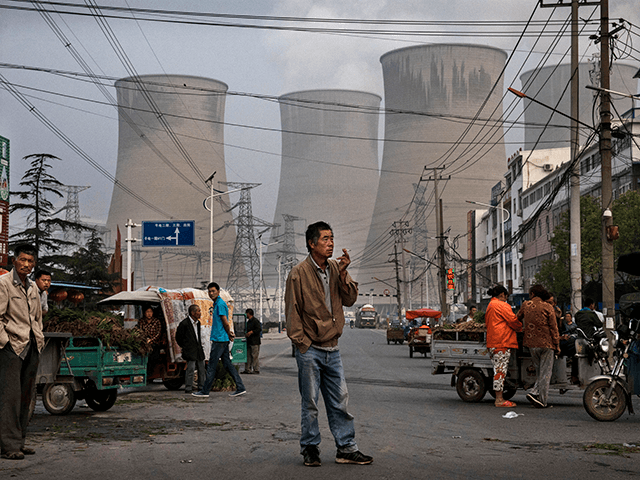Some factories in southeastern China’s Guangdong province have been forced to rent energy generators in recent weeks after the state-run China Southern Power Grid failed to supply Guangdong and other provinces with sufficient energy supplies starting in May, Hong Kong’s Apple Daily newspaper reported on Monday.
Tang Xuehui, the general manager of a shoe factory in Guangdong’s Dongguan city, told Apple Daily in a report published on June 21 that the plant he manages “can produce 100,000 pairs of shoes each month, but the electricity restrictions in place since May have had a serious impact. The factory has had to rent its own generator in order to guarantee on-time delivery.”
Local power grid firms in Guangdong cities including Dongguan, Guangzhou, Foshan, and Shantou began issuing notices in late May “urging factory users in the region to halt production during peak hours, between 7:00 am and 11:00 pm, or even shut down for two to three days each week depending on the power demand situation,” Reuters reported on May 27, citing “five power users and local media reports.”
“Due to the acceleration of economic activity resumption and persistent high temperatures, electricity consumption has been increasing,” Guangdong’s provincial energy bureau said in a statement issued in late May. The bureau added that Guangdong’s average temperatures in May “were 4 degree Celsius above normal, boosting air conditioner demand.”
China’s state-run power grids gave failed to supply sufficient power to factories across central and northern Chinese regions in recent weeks as well, including Zhejiang, Jiangsu, Shandong, Anhui, and Inner Mongolia, Apple Daily revealed on Monday.
Tang told Apple Daily this week he has rented a “high-cost diesel generator” to keep his Dongguan shoe factory running during recent power outages, but added that “rising coal prices have had a knock-on effect on diesel. The factory’s electricity costs have more than doubled.”
By subscribing, you agree to our terms of use & privacy policy. You will receive email marketing messages from Breitbart News Network to the email you provide. You may unsubscribe at any time.
“The power restrictions are a double-whammy for manufacturers who have already been forced to lower production due to a recent surge in raw material prices including steel, aluminium, glass and paper,” Reuters noted in its May 27 report.
While the inflation of the prices of Chinese raw material goods and power outages have affected provinces across China in recent weeks, the effects of the fluctuations have been most acutely felt in Guangdong. The coastal Chinese province, located just north of Hong Kong, is one of China’s main export hubs and boasts an annual gross domestic product equivalent to that of South Korea, according to Reuters.
China’s state-run Taishan Nuclear Power Plant is located in Guangdong and supplies power for Guangzhou, the provincial capital, and Shenzhen, known as China’s Silicon Valley. The plant, which lies just 88 miles west of Hong Kong, recently suffered from “fuel-rod damage” according to China’s Ministry of Ecology and Environment.
The state-run China General Nuclear Power Group is the majority stakeholder and operator of Taishan Nuclear Power Plant, but it was also built with support from the power group Électricité de France (EDF), which is 85 percent French state-owned. The U.S.-based CNN news network published a letter by a subsidiary of EDF, Framatome, on June 14 warning of an “imminent radiological threat” from Taishan Nuclear Power Plant due to an “increase in the concentration of certain noble gases in the primary circuit of reactor no. 1.” The letter referred to a part of the plant’s cooling system.
Framatome added that the firm had “requested an extraordinary meeting of the power plant’s board ‘for management to present all the data and the necessary decisions,'” according to CNN. Framatome addressed its letter to the U.S. Department of Energy, according to CNN, which said the warning “included an accusation that the Chinese safety authority was raising the acceptable limits for radiation outside the facility in order to avoid having to shut it down.”
China’s Ministry of Ecology and Environment admitted on June 14 that it had recently documented “damage to fuel rods” at the Taishan Nuclear Power Plant but claimed that the problem was “common.” The ministry’s statement said “fuel-rod damage during the operation of nuclear power plants is unavoidable” and “a common phenomenon,” the BBC reported on June 16.

COMMENTS
Please let us know if you're having issues with commenting.